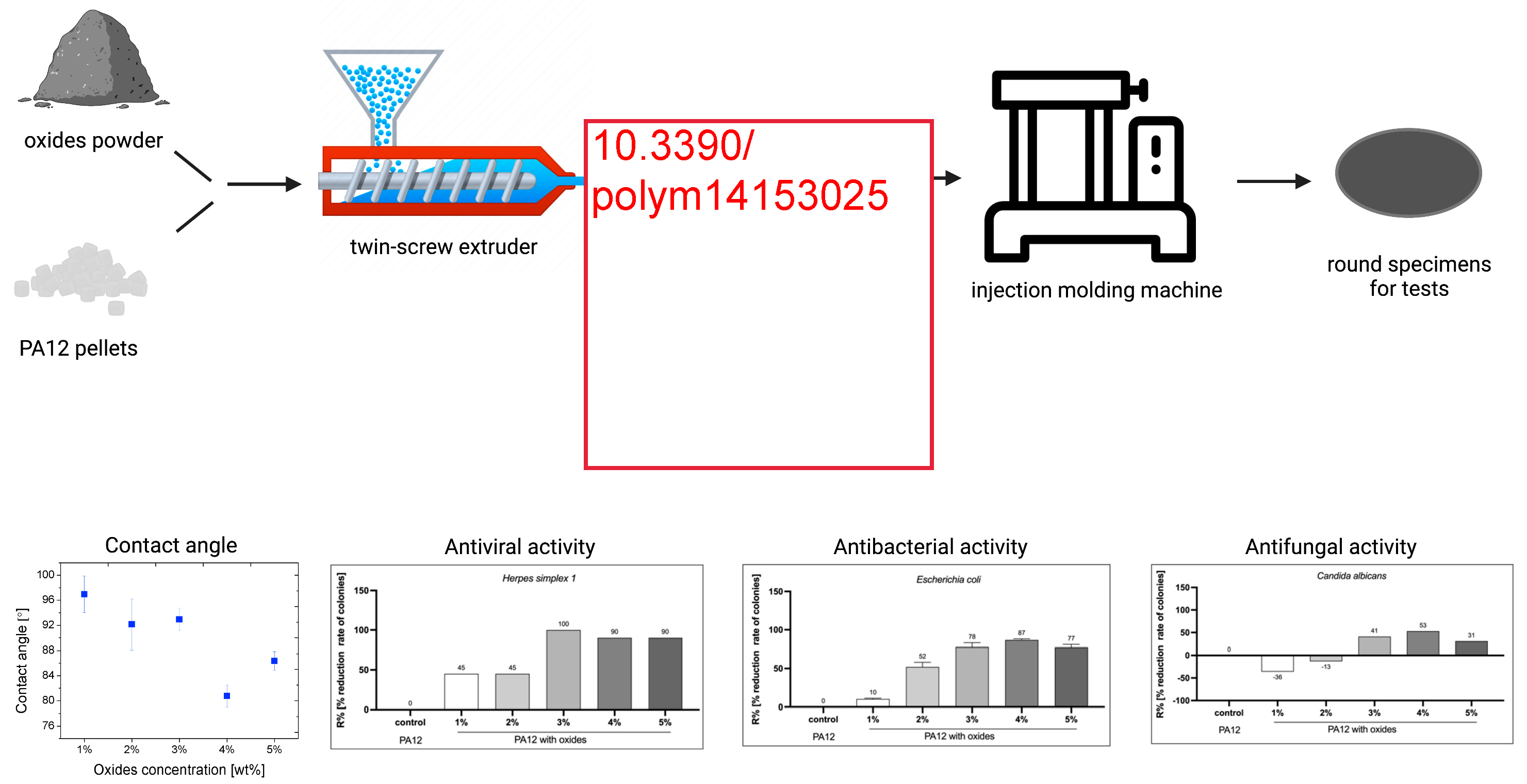New publication
Prof. Monika Staniszewska and MSc. Karina Rosołoniec from the Department of Microbiology, Molecular Genetics and Genomics are co-authors of the publication “The Composites of Polyamide 12 and Metal Oxides with High Antimicrobial Activity”.
The lack of resistance of plastic objects to various pathogens and their increasing activity in our daily life have made researchers develop polymeric materials with biocidal properties. Hence, this paper describes the thermoplastic composites of Polyamide 12 mixed with 1–5 wt % of the nanoparticles of zinc, copper, and titanium oxides prepared by a twin-screw extrusion process and injection moulding. A satisfactory biocidal activity of polyamide 12 nanocomposites was obtained thanks to homogenously dispersed metal oxides in the polymer matrix and the wettability of the metal oxides by PA12. At 4 wt % of the metal oxides, the contact angles were the lowest and it resulted in obtaining the highest reduction rate of the Escherichia coli (87%), Candida albicans (53%), and Herpes simplex 1 (90%). The interactions of the nanocomposites with the fibroblasts show early apoptosis (11.85–27.79%), late apoptosis (0.81–5.04%), and necrosis (0.18–0.31%), which confirm
Latko-Durałek, P.; Misiak, M.; Staniszewska, M.; Rosłoniec, K.; Grodzik, M.; Socha, R.P.; Krzan, M.; Bażanów, B.; Pogorzelska, A.; Boczkowska, A., The Composites of Polyamide 12 and Metal Oxides with High Antimicrobial Activity. Polymers 2022, 14, 3025.
More: https://doi.org/10.3390/polym14153025
